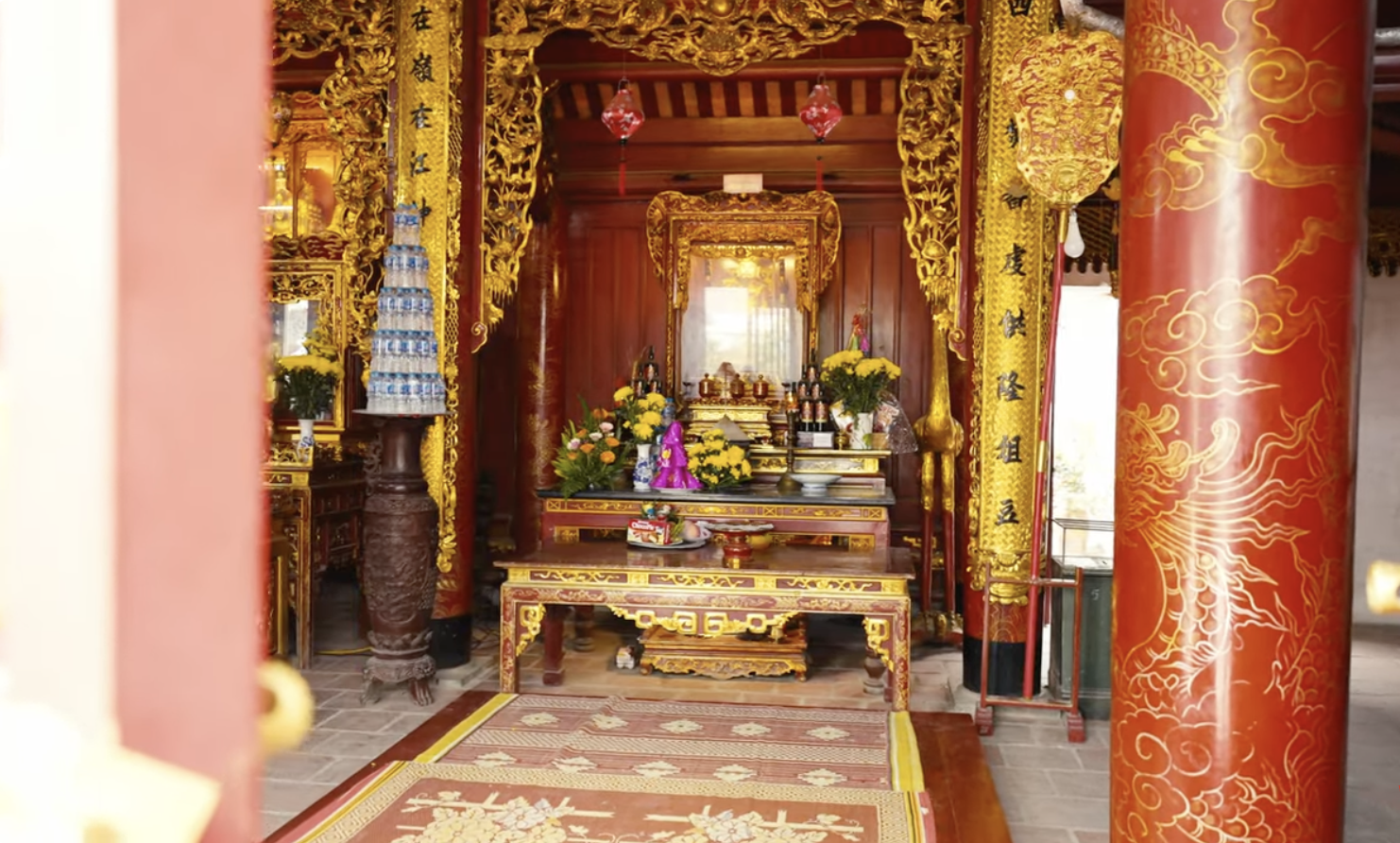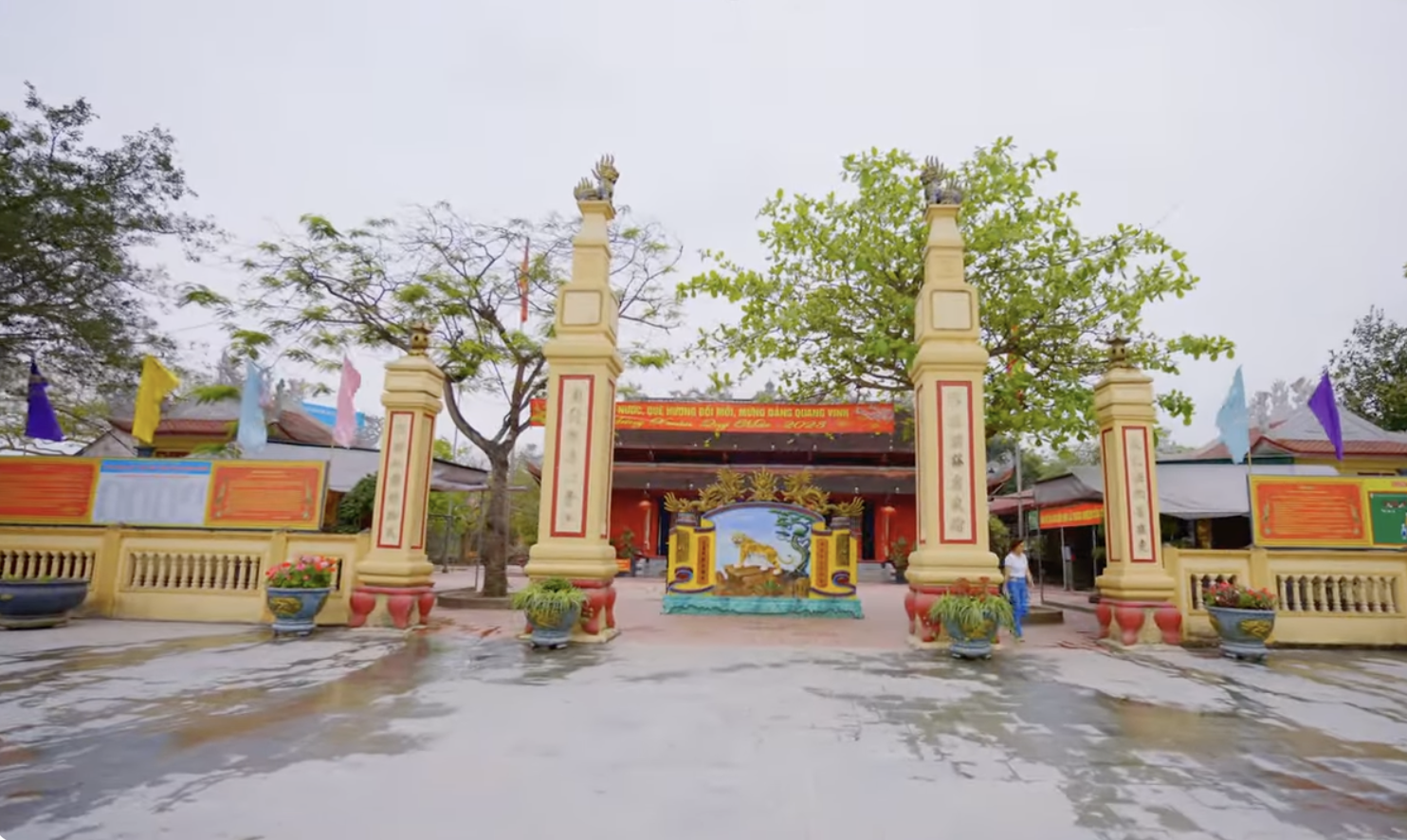A prominent cultural and spiritual site in central Vietnam
Located in Xuan Am village (now Hamlet 5, Hung Thinh Commune, Hung Nguyen District, Nghe An Province), Ong Hoang Muoi Temple is a revered spiritual site in central Vietnam, built in the late Le dynasty (17th century) to honor the legendary figure Ong Hoang Muoi.
Folklore holds that Ong Hoang Muoi was a deity who descended to earth to help humanity. Locals recount many tales of his contributions to community welfare and national defense, particularly linking him to historical figures from the Lam Son Uprising. A brilliant general, he was mortally wounded and died after returning to his homeland.
He was posthumously bestowed noble titles such as “Khâm Sai Tiết Chế Nghệ An, Quảng Nam, Thuận Hóa Đẳng Xứ, Kiêm Thủy Bộ Chư Dinh, Bình Chương Quân Quốc Trọng Sự, Thái Úy, Vị Quốc Công.” The temple still holds 21 royal decrees, a Chinese-script biography, and a collection of historically and artistically valuable statues and offerings.

Unique architecture, artistic legacy, and rare sacred artifacts
Despite centuries of change and multiple restorations, the temple on the banks of the Lam River retains its majestic architecture, detailed wood carvings, and precious ceremonial items.
Originally built in 1634, the temple was destroyed in subsequent periods and later rebuilt in 1995 in traditional style. The complex features three main halls - Upper, Middle, and Lower - with characteristic Nguyen dynasty temple architecture. Structures like the triple-gate entrance, celestial altar, and shrines for spirits are crafted from intricately carved wood, depicting sacred animals like dragons, phoenixes, and unicorns.
Due to its historical, cultural, scientific, and artistic value, Ong Hoang Muoi Temple was recognized as a Provincial Historical and Cultural Relic in 2002, a spiritual tourism site in 2018, and a National Intangible Cultural Heritage by the Ministry of Culture, Sports and Tourism in 2019 (Decision No. 2970/QĐ-BVHTTDL).
Ong Hoang Muoi Festival: Honoring ancestors and preserving traditions

The temple’s festival originated alongside its history. Traditionally held on the 15th day of the third lunar month, since 1995 it has been celebrated on the 9th and 10th days of the tenth lunar month - coinciding with Ong Hoang Muoi’s passing, the New Rice Festival, and the Hạ Nguyên (Early Winter) Festival. This date is considered auspicious and symbolizes fullness and blessing. The original date now hosts only ceremonial incense offerings.
The festival includes solemn traditional rituals such as the ceremonial cleansing, decree procession, announcement rites, grand offering ceremony, and thanksgiving rites. A unique feature is the Mother Goddess ritual performances (hầu đồng), expressing worshippers' hopes and prayers through spiritual dance and song. The Mother Goddess worship tradition is recognized by UNESCO as a World Intangible Cultural Heritage.
The festival plays a vital role in preserving national customs and spiritual practices while meeting the cultural and religious needs of the community.
According to Hoang Thi Hoai Thanh, Head of Hung Nguyen District’s Department of Culture and Information and Temple Site Manager, over VND 110 billion (about USD 4.3 million) in public donations and private contributions have been invested to expand and upgrade the temple grounds, from spiritual areas to service facilities.
Hung Nguyen District also views the temple as a key cultural-spiritual landmark and is actively promoting, organizing, and managing the site to maximize its value. Festival programming is continuously updated to enhance its appeal, offering spiritual fulfillment and cultural experiences to both locals and tourists.
Vo Thu